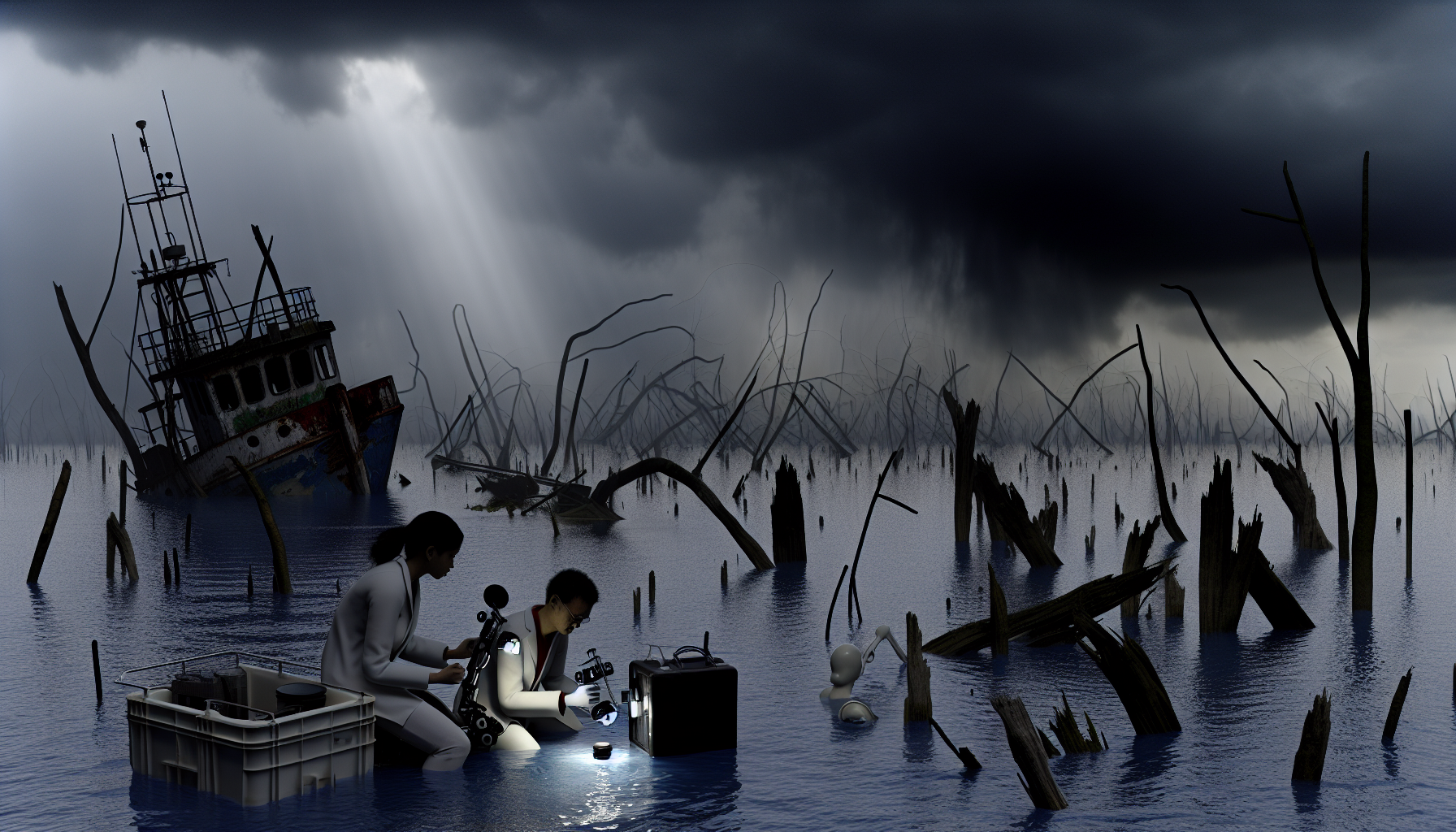In a world where the symphony of nature has become a haunting quietude, the oceans, which once echoed with the melodies of abundant marine life, now seem to be holding a minute of silence—a silence that stretches indefinitely. The lament of the sea has begun, and it is a dirge that tells the tale of a vibrant past, singing a mournful ballad of what was and may never be again.
The thrum of ship engines, the sonar communication amongst a pod of whales, and the once persistent clicking of dolphins have dwindled into an eerie calm. This is not the silence of peace; it is the absence of life that defines the new era of our oceans. As we tread further into the depths of this Green Dystopia, we must attempt to understand the causes, the consequences, and the profound silence that has befallen our once-singing waters.
Once upon a time, traces of magic glittered along our ocean shores in the form of bioluminescent bays. These coastal wonders embodied the fantastic narratives of a planet teeming with life, an underwater universe creating light in the complete absence of the sun. However, our rampant pollution and climate disasters have snuffed out the bioluminescence like candles in the wind. The tale of ‘Darkened Tides – The Collapse of Bioluminescent Bays,’ serves as a poignant prelude to the ocean’s current hush.
And as the silence grew, the global cacophony, once scorned by conservationists, took on a nostalgic tone. In ‘The Quiet Apocalypse – When Global Noise Pollution Ceased,’ the contrast between the noisy anthropocene and the now-tranquil apocalypse serves as a stark reminder of the extinction-level event that halted humanity’s industrial din. The seas are now quiet, but this is not the victory environmentalists once desired.
The consequences are grim: ecosystems that relied on acoustic communication for reproduction, feeding, and migration patterns are unraveling. Fish schools are sparse, their communities shattered not only by overfishing but by the inability to navigate and connect in the silence. Predators like orcas, reliant on vocalizations to hunt and socialize, are retreating further into the ocean’s abyss. The intricate dance of marine communication has halted, leaving behind a world where survival is silent, but in it, danger looms louder.
The economic impact stings with equal severity. Coastal communities that once prospered from the wonders of marine life — through tourism, fishing, and cultural experiences — are struggling to redefine their identities as the sea’s gifts erode. The depletion of once abundant fisheries has sent shockwaves through the global food chain, leaving markets and dining tables with a void that mirrors the emotional emptiness of the seas.
But here, in this dystopian vista, there are those who challenge the quietus. Underwater microphones, or hydrophones, are being deployed in a desperate attempt to capture the whispers of change, to define what silence means for a world that once celebrated the ocean’s chorus. Marine biologists and amateur enthusiasts alike listen intently for the rare click or whistle, holding onto hope or perhaps just the memory of a more vocal sea.
In confronting this sea of silence, we are not passive observers but active participants. Our actions, our industries, and our negligence have contributed to this quietude. It is a mirrored reflection, a shadow of our collective choices, and a provocation to heed the warnings that are left. What does this mean for the future? Is it too late for a requiem, or is there still time for an overture—a chance to rebuild and learn from the sea’s lament?
As we face a milieu where the eerie quiet of the oceans becomes the norm, one must wonder—can the song of the sea ever be restored, or will this lament be its final canticle?
